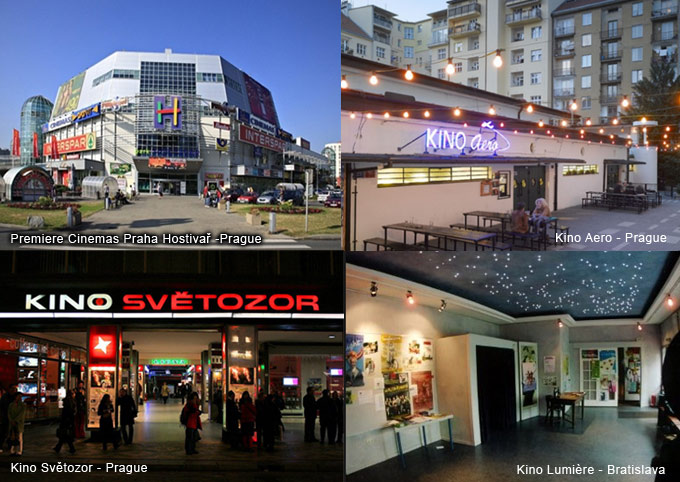
The course
Visits

Světozor Kino
Country |
Site
|
Town
|
No. of screens |
No. of digital screens |
Projector |
Resolution |
Czech Republic |
Světozor Kino |
Prague |
2 |
2 |
Sony |
4K |
But only two steps away from the Square, at the Kino Světozor, our traveller seeking destinations off the beaten track will be able to find a place where history communicates with the present. Founded in 1918, soon transformed into a cabaret, returned to its original use in 1957, it became internationally famous in 1968 when, for a year and a half, it was home to the Kino Automat, i.e. the experiment in interactive cinema exhibited in the Czechoslovak Pavilion, at the International and Universal Exhibition in Montreal, Expo 67.
Today the Světozor has evolved from the panoramic cinema it was in the '50s, to a city art-house miniplex that concentrates on the quality of its programming, avantgarde technology and customer services.
Indeed, since its reopening in 2004, the cinema has enjoyed the support of a loyal audience, which has gradually made it into the most widely attended non-multiplex cinema in the country. Besides screening quality, contemporary, art-house films, in its two digitally-equipped auditoriums, Světozor also hosts a wide range of festivals and offers live broadcasts of the worlds’ finest theatre and opera performances. An important part of Světozor’s identity is its film-shop “Terry Posters”, named after its godfather, Terry Gilliam. “Terry Posters” is not only the name of a shop offering all kinds of goods related to quality films (posters, books, dvds, clothes etc.), but also a giant archive of the unique history of Czechoslovakian art-film posters from the years 1960-1989, comprising over 90,000 posters of 15,000 kinds. The Světozor offers its audiences a variety of initiatives plus a bar and café with Wi-Fi Internet and their own brew of beer with the same name - the lager Světozor, brewed in the town of Nová Paka.
The Světozor is part of Aeropolis, a small but dynamic art-house cinema chain, which has also started up its own version of Secret Cinema. But we shall deal with this in our next issue.
Premiere Cinemas Czech
Kino Aero
Kino Lumière

Nakladove Nadrazi Žižkov, Open Air Cinema in the Rail Yard

Cultural Center at Žižkov Freight Railway Station. The industrial heritage site hosts NFA (National Film Archive) open air Summer cinema, as well as theatre performances, several exhibitions and public discussions.
http://letnikino.nfa.cz/en/about/
Ponrepo-Bio Konvikt Kino

Cinema Ponrepo housed in a historically valuable refectory of a boarding school, Konvikt, in Prague's Old Town. In the 14th century it was the location of the Jerusalem House with Chapel of Mary Magdalene, which was founded after 1375 by Jan Milíč for penitent women. Later it was the venue of an organ school, one of whose pupils was Antonín Dvořák, who became the school's director after graduation.
The Konvikt Hall became one of the main cultural centres of Prague in late 18th and 19th century. Many prominent Czech and foreign musicians performed here, including Ludwig van Beethoven, who played there in 1798, Franz Liszt, Anton Rubinstein, Richard Wagner, Czech violin virtuosos Ferdinand Laub and František Ondříček, and the pianist and composer Jan Ladislav Dusík. Balls and occasional theatre performances and exhibitions were held here.
In modern times Prague inhabitants started to go to the then very popular cinema, BIO KONVIKT. After 1945, the modified auditorium housed the puppet film studio of Jiří Trnka, who made the Czech film industry famous throughout the world.
Karel Zeman Museum
http://www.muzeumkarlazemana.cz/en
The Karel Zeman Museum presents the life's work of the world renowned film maker Karel Zeman and his cinematic special effects, which made Czech cinematography world famous in the 20th century.
The museum maps the life and work of Karel Zeman from its beginnings - from his first animations and puppet films in the 1940's to work from his last creative period. A substantial part of the museum is dedicated to his most significant films - Journey to the Beginning of Time, The Fabulous World of Jules Verne and The Fabulous Baron Munchausen.